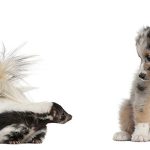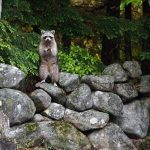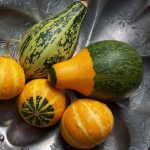How To
Moose-Watching Advice | How, When & Where to Spot a Moose in New England
Where do moose live? What’s the best way to see a moose? Here’s some moose-watching advice from regional experts on how to spot one of these iconic animals for yourself.

Coffee By Design | Portland, Maine
Photo Credit : Katherine KeenanMoose are more than mere players in New England’s ecosystem; in terms of tourism, they’re a star attraction. Where do moose live? What’s the best way to see a moose? Here’s some moose-watching advice from regional experts on how to spot one of these iconic animals for yourself.
Learn More: Don’t miss the March/April 2018 Yankee feature, “Ghosts of the Northern Forest.” From the heart of moose country, it tells a story about who wins and who loses in our rapidly changing climate.New England Moose-Watching Advice The Animal That People Want to See the Most
- Moose-watching is best done by car—just don’t stop too close to them or get out of the vehicle. Remember: These are wild animals and always should be treated with respect and caution.
- The best time for moose-watching is in mid-May through July, when they move into open wetlands to feed. Like most members of the deer family, moose are crepuscular, meaning they’re most active at dawn and twilight.
- Keep your eyes peeled for bogs and wetlands, where moose tend to hang out. They’re also drawn to salt licks, which is why many prime moose-spotting routes have areas where road salt runoff has built up.
- If you’re hoping to spot a moose in New Hampshire, try looking along Route 16 north of Milan; Route 26 east of Dixville Notch; Route 112 east from Lincoln to Bear Notch Road; and Route 110 north of Berlin to Route 110A.
- For moose in Vermont, you may have luck on Route 114 in Canaan and East Burke; Route 105 from Island Pond to Canaan; and the viewing platform at Route 105 and Notch Pond Road in North Brunswick.
- How about where to see moose in Maine? The moose population in Maine is among the biggest in the U.S., which means this state has entire regions worth checking out: Western Lakes and Mountains, Kennebec Valley, Maine Highlands, and Aroostook County.
- And of course you can always rely on professional tour guides, such as Gorham Moose Tours in Gorham, NH (gorhammoosetours.org), and Northwoods Outfitters in Greenville, ME (maineoutfitter.com).
Research by Heather Tourgee. Sources: Wendy Bolduc, Maine Inland Fisheries and Wildlife; Susan Warner, Vermont Fish and Wildlife; Katelyn White, NH Grand








Moose sightings are common throughout the Northeast Kingdom
Christmas Eve morning a giant Mr. Moose (10-12′ tall) was starting down my barking Golden Retriever “Olaf” on drive face-to-face 20′ away. It was a Merry Christmoose !
Christmas Eve morning in Peterborough a 10-12′ Mr. Moose was staring down my barking Golden Retriever “Olaf” on driveway. Merry Christmoose … till he slowly turned & crossed the road. <3
Early December morning on Petersham Road on the way to Athol, MA, a beautiful MALE moose came running down the side of the hill luckily sliding to a halt. He just looked majestic and I know it was a big male because of his huge beautiful rack. I slowed, stopped and watched, as I flashed my lights in case of oncoming cars. He was magnificent and the very first moose I’ve ever seen in my long life.
In July 2019 my wife, daughter and I booked a tour with Gorham Moose Tours, as part of our summer vacation into the North Woods. Being from Pennsylvania, we don’t get the chance to see moose the way residents of Northern New England do. Our driver and guide, Gary, was very knowledgeable as well as being a storyteller. And he had a lot of stories to share, from his experience as a hunter as well as a tour guide. We were able to see a total of 9 moose on our drive up and down Route 16. We ranged as far east as almost getting into Maine, and west to Signal Mountain Road west of Errol. Our family highly recommends booking with Gorham Moose Tours.
I have a friend that would always go on about a moose she and her husband would often see when they sat out on their back deck after supper. None of us really believed it (used to tell her it was the wine she had after supper) until she had us all get together one evening and there he was, meandering on through the back of the yard! The reason we teased her so about it was she lived in Manchester, CT, about 2 miles from Main St!
Have to see real one someday!!!
We have a favorite spot in Rangley Maine We call it the Moose Drive In.
Never has failed, always see one or two a night.!!
Would you mind sharing the location? We’re going to be in Rangeley 10/6 & 10/7. We went by the gravel yard last time and saw a couple but they were very far away.
Funny I’m in East Burke Vermont this year and I have not seen any moose
I am having my breakfast and reading newengland.com like I often do which I love but I did not appreciate the toilet bowl add. Disgusting!
I’ve been to New England three times in the fall and have never seen a moose. Hoping to see one this October 2021 when I go there again.
Went on Moose tour in Millinocket area no luck after 2plus hours as we head back a moose shows up in rear view mirror of our car